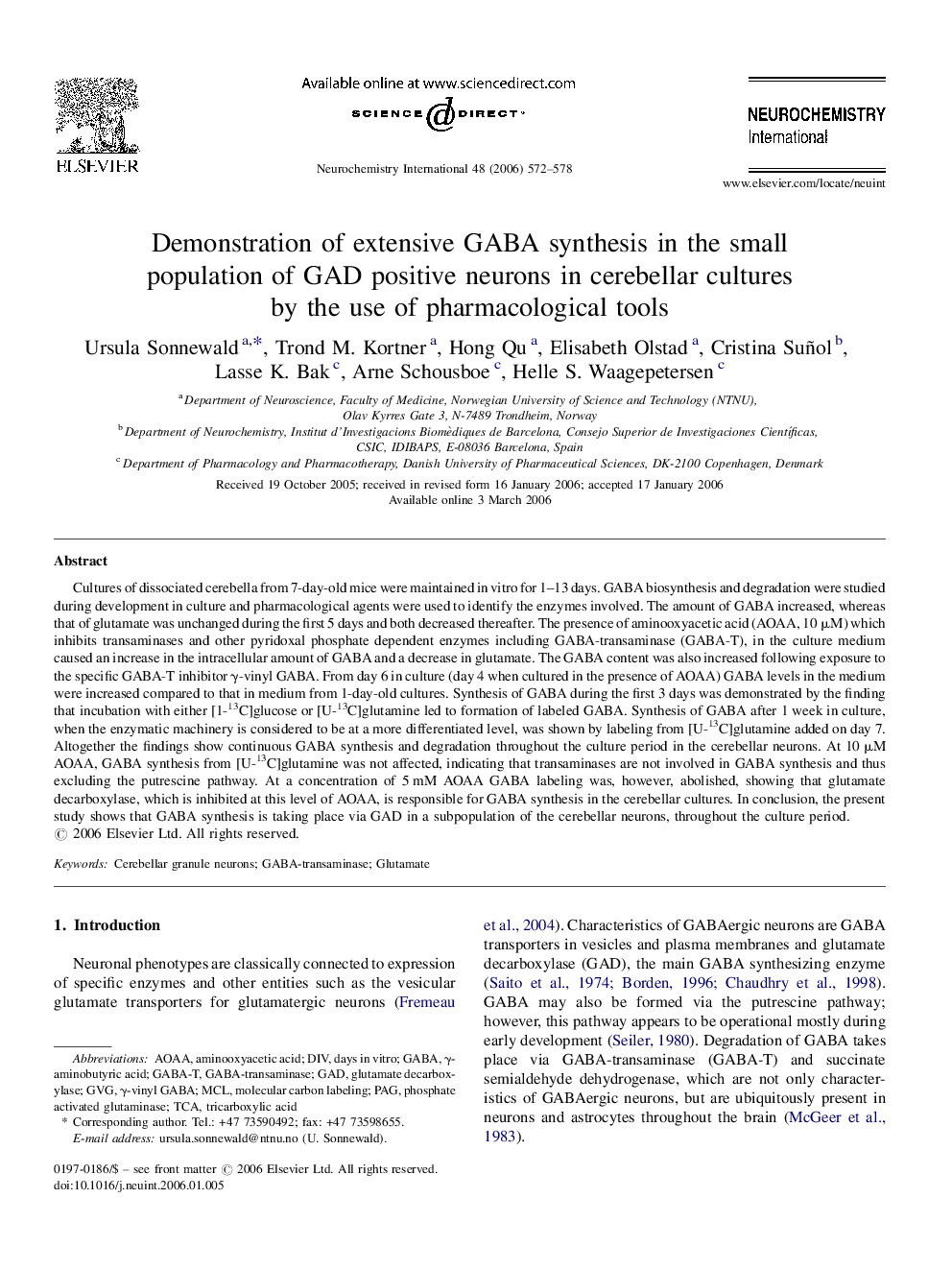| Article ID | Journal | Published Year | Pages | File Type |
|---|---|---|---|---|
| 2202207 | Neurochemistry International | 2006 | 7 Pages |
Cultures of dissociated cerebella from 7-day-old mice were maintained in vitro for 1–13 days. GABA biosynthesis and degradation were studied during development in culture and pharmacological agents were used to identify the enzymes involved. The amount of GABA increased, whereas that of glutamate was unchanged during the first 5 days and both decreased thereafter. The presence of aminooxyacetic acid (AOAA, 10 μM) which inhibits transaminases and other pyridoxal phosphate dependent enzymes including GABA-transaminase (GABA-T), in the culture medium caused an increase in the intracellular amount of GABA and a decrease in glutamate. The GABA content was also increased following exposure to the specific GABA-T inhibitor γ-vinyl GABA. From day 6 in culture (day 4 when cultured in the presence of AOAA) GABA levels in the medium were increased compared to that in medium from 1-day-old cultures. Synthesis of GABA during the first 3 days was demonstrated by the finding that incubation with either [1-13C]glucose or [U-13C]glutamine led to formation of labeled GABA. Synthesis of GABA after 1 week in culture, when the enzymatic machinery is considered to be at a more differentiated level, was shown by labeling from [U-13C]glutamine added on day 7. Altogether the findings show continuous GABA synthesis and degradation throughout the culture period in the cerebellar neurons. At 10 μM AOAA, GABA synthesis from [U-13C]glutamine was not affected, indicating that transaminases are not involved in GABA synthesis and thus excluding the putrescine pathway. At a concentration of 5 mM AOAA GABA labeling was, however, abolished, showing that glutamate decarboxylase, which is inhibited at this level of AOAA, is responsible for GABA synthesis in the cerebellar cultures. In conclusion, the present study shows that GABA synthesis is taking place via GAD in a subpopulation of the cerebellar neurons, throughout the culture period.
